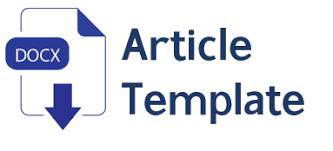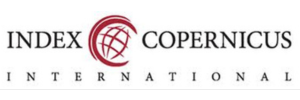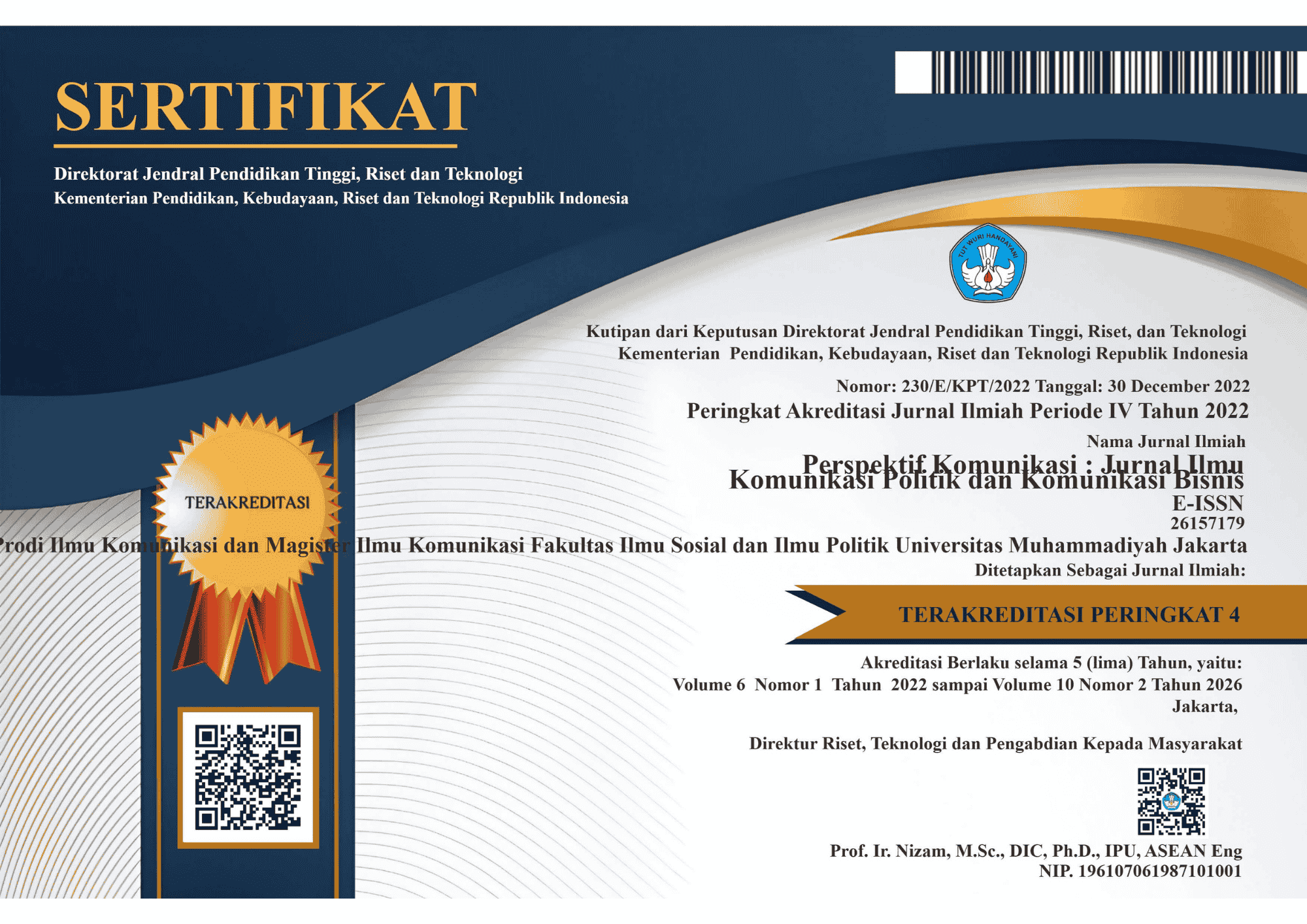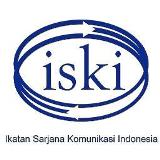KONVERGENSI MEDIA GRUP EMTEK DALAM PEMBERITAAN DISABILITAS
DOI:
https://doi.org/10.24853/pk.4.1.61-72Abstract
Sebagian masyarakat masih memandang penyandang disabilitas sebagai warga yang tidak mampu bekerja sehingga harus disantuni (charity-based approach to disability). Sebagai agen pembaharu dalam pembangunan, media massa memiliki peran penting untuk mengubah pemahaman masyarakat, bahwa penyandang disabilitas juga memiliki kemampuan untuk mandiri. Tujuan dari penelitian ini adalah untuk mengkaji konvergensi media yang dilakukan grup EMTEK terkait pemberitaan disabilitas, yakni oleh media televisi SCTV, media online Liputan6.com dan kanal berbagi video milik grup EMTEK yakni vidio.com. Pendekatan penelitian ini adalah kualitatif dengan metode teknik pengumpulan data, yakni dengan mengamati isi berita yang ditayangkan di media online liputan6.com, vidio.com dan SCTV serta melakukan studi literatur. Hasilnya, konvergensi media secara kepemilikan media dan pemberitaan melaui newsroom, semakin memperluas jumlah khalayak terhadap informasi yang disampaikan. Tidak hanya luas jangkauan khalayak dengan beragamnya jenis media yang digunakan, namun juga memperluas segmentasi khalayak melalui kanal-kanal yang ada televisi, media online, media berbagi video. Perubahan sosial bisa terjadi ketika berita positif dan inspiratif tentang disabilitas yang disampaikan oleh media massa diterima oleh masyarakat dan dijadikan model pembelajaran, seperti dalam teori belajar sosial dari Albert Bandura. Munculnya kritik sosial terkait posisi penyandang disabilitas di media muncul karena hingga kini belum model pemberitaan yang dinilai pas untuk merepresentasikan penyandang disabilitas.References
Bandura, A. (1977). Self-efficacy: Toward a Unifying Theory of Behavioral Change. Psychological Review, 84 (2), 191–215.
Budiarti, M., Apsari, N.C. (2017). Pergeseran Paradigma dalam Disabilitas. Intermestic: Journal of International Studies. Volume 1, No 2, Mei 2017.
Bungin, Burhan. 2009. Sosiologi Komunikasi: Teori, Paradigma dan Diskursus Teknologi Komunikasi di Masyarakat. Jakarta: Kencana Prenada Media Group.
Degener, T., Quinn, G. (2002). Human Rights and Disability: The Current Use and Future Potential of United Nations Human Rights Instruments in the Context of Disability. Geneva, Office of the High Commission for Human Rights.
Dewi, N. (2017). Disability Issues and Social Work. Yayasan Sayangi Tunas Cilik.
Haller, B. (1999). News Coverage of Disability Issues: Final Report for The Center an Accessible Society. S. Diego: Center for an Accessible Society.
_______ (1993). Paternalism and Protest: Coverage of deaf Persons in The Washington Post and New York times. Mass Communication Review, 20, 3-4.
_______ (2000). If They Limp, They Lead? News Representations and The Hierarchy of Disability Images. In. D. O. Braithwaite & T. L. Thomson (Eds.), Handbook of Communication and People with Disabilities. San Diego, CA: Lawrence Erlbaum Associates.
Kusuma, Satria. (2012). Komunikasi dalam Perubahan Sosial. Interact: Vol.1, No.1, Hal. 42-54. Mei, 2012. Prodi. Ilmu Komunikasi, Universitas Atma Jaya.
Marshall, Philip & Burnett, R. (2002). Web Theory: An Introduction. ERA - Humanities & Creative Arts.
Muhtadiah, D. H. (2018). Konvergensi Media Terhadap Kinerja Jurnalis. Jurnal Tabligh Volume 19 No 1, Juni 2018.
Nastiti, Aulia Dwi. (2012). “Identitas Kelompok Disabilitas Dalam Media Komunitas Online. Skripsi Fakultas Ilmu Sosial dan Ilmu Politik, Universitas Indonesia.
Power. D. (2006). Disability in The News. The Australian Press 2004-2005. Communicacion e Discapacidades. ISBN-13 978-84-690-4140-6
Rakhmat, Jalaluddin. (2007). Psikologi Komunikasi. Bandung: Remaja Rosdakarya.
Rini. (2011). Peran Media Massa dalam Mendorong Perubahan Sosial Masyarakat. Jurnal Ilmiah Orasi Bisnis. Edisi ke-VI, November 2011.
Sieff, E.M. (2003). Media Frames of Mental Ilness: The Potential Impact of Negative Frames. Journal of Mental Health, 12, 259-269.
Suranto. (2015). Optimalisasi. Proseding Seminar Nasional: Kontribusi Ilmu-ilmu Sosial dalam Percepatan Pembangunan Indonesia Bermartabat. FISIP UNY 2015.
Saputro, Sulistyo. (2015). Analisis Kebijakan Pemberdayaan dan Perlindungan Sosial Penyandang Disabilitas. Deputi Bidang Koordinasi Penanggulangan Kemiskinan dan Perlindungan Sosial. Kemenko Pembangunan Manusia dan Kebudayaan.
Website:
PT. Elang Mahkota Teknologi. (2019). Embracing The Journey Toward Digital. Laporan tahunan 2018 Annual Report. Diunduh pada 25 Mei 2020. dari: http://www.emtek.co.id/files/uploads/report/file_en/2019/Apr/26/5cc294af04b2a/ar-emtek-2018.pdf
Thaniago, Roy. (2018). “Bolehkah Saya Menjumpai Difabel di Media dengan Layak?” dipublikasikan tanggal 12 Desember 2018 di http://www.remotivi.or.id/amatan/503/bolehkah-saya-menjumpai-difabel-di-media-dengan-layak



_2.png)


1.png)

2.png)



















